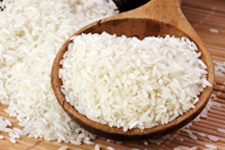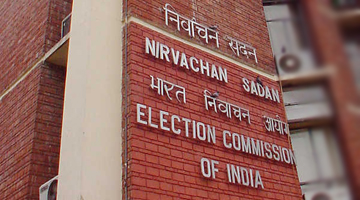Cus - Once there is report of Agmark Lab clearly stating that samples did not conform to requirements of Basmati Rules inasmuch as presence of other rice exceeded max permissible limit of 20%, then Customs was bound by such report - Revenue's appeal allowed: HC
By TIOL News Service
NEW DELHI, AUG 31, 2015: THIS is a Revenue's appeal.
The Respondent filed two shipping bills for export of ‘PUSA 1121 Indian Basmati Sella Rice' to Dubai in four containers. The Respondent also submitted a copy of the test report of a private laboratory, i.e., Sri Ram Institute of Industrial Research, New Delhi . The goods were examined in the presence of the staff of Customs and of the Respondent and samples were drawn for testing at the SGS Laboratory Pvt. Ltd. at Gurgaon . However, the CHA and the representative of the Respondent requested that the sample be sent for testing to any Agmark Testing Centre.
The Respondent thereafter filed a Writ Petition. The Court directed the Department to draw the necessary samples in the presence of the Respondent and send them to any of the Agmark Testing Centres in terms of Circular No. 33(RE-2008)/2004-2009 dated 30th September, 2008 of the Customs Department.
Pursuant to the above order, samples were drawn and sent to the Regional Agmark Laboratory, Okhla, New Delhi (RAL). Two analytical reports were submitted by the RAL mentioning as follows -
+ The sample does not conform to standards prescribed in Basmati Rice (Export) Grading and Marketing Rules, 1979 (hereafter ‘the Basmati Rules').
+ The sample conforms to the requirements of length and length/breadth ratio as per the Notification dated 5th November 2008 of the Director General of Foreign Trade (DGFT).
Since there was ambiguity in the above report, the Commissioner sought a clarification from RAL as to whether in the light of the notification dated 5th November 2008 the product in question was Basmati (including Pusa Basmati 1121) or Non-Basmati Rice. In response to the above query the RAL, New Delhi sent a letter dated 16th March 2011 in which it confirmed that both samples were not conforming to the Basmati Rules as they contained ‘other rice' in a proportion that exceeded 20% which was the maximum permitted under the said Rules. Secondly, the rice did not possess the natural fragrance in both raw and cooked stages. Hence, neither of these samples could be considered as samples of Basmati Rice.
Since export of non- Basmati Rice was prohibited under the Export Policy in terms of Notification No. 55 (RE-2008) 2004-2009, a SCNwas issued to the Respondent inter alia proposing confiscation of the impugned goods u/s 113(d) of the CA, 1962 and imposition of penalty.
In adjudication, the Additional Commissioner ordered confiscation of the seized goods valued at Rs.42,73,320/- with an option to redeem the same on payment of a redemption fine of Rs.8,00,000/-. A Penalty of Rs.3,00,000/- was also imposed on the respondent u/s 114.
This order was upheld by the Commissioner(A).
However, the CESTAT relying on the decision in Global Agro Impex 2012-TIOL-1408-CESTAT-DEL set aside the orders of the lower authorities and allowed the appeal.
Against this order, the Commissioner of Customs is before the High Court.
After narrating the facts, the counsel for the Revenue submitted that the decision of the CESTAT in Global Agro Impex (supra) is pending consideration before the Allahabad High Court in Appeal No. 797/2012. Furthermore, in view of the decision in Hico Products Ltd. 2002-TIOL-694-SC-CX , Ishaan Research Lab (P) Ltd. &Ors. 2008-TIOL-166-SC-CX & Damnet Chemicals (P) Ltd. &Ors. 2007-TIOL-156-SC-CX , the report of RAL was binding on the customs authorities.
The respondent submitted that the samples clearly conformed to the requirements of length and the length/breadth ratio in terms of the DGFT notification dated 05th November, 2008 and the requirement regarding percentage of other rice was later on introduced by the Department on its own and even the SCNdid not call upon the Respondent to explain any discrepancy on that score; that the test reports did not clearly indicate whether the ‘other rice' found present in the consignment was also another form of Basmati Rice itself; that a reply was received under the RTI Act from the Bureau of Indian Standards that there was no Indian Standard or method to differentiate non-Basmati Rice from Basmati Rice; RTI reply from Ministry of Agriculture informed that the Basmati Rice Rules were made to ascertain the ‘quality of Basmati Rice.'
The High Court observed -
+ While the notification dated 16th September, 2008 did prescribe that the standard to be met as far as Basmati rice meant for export was concerned was that the grain should be 7 mm in length and ratio of length to breadth of the grain shape should be more than 3.6, (which was later amended vide notification dated 17th August, 2010 to read more than 6.61mm of length and a length to breadth ratio of more than 3.5), the fact is that under the DGFT Circular dated 30th September, 2008 the samples were also to be sent for testing to the Agmark Laboratories. Combined with the fact that the notification dated 5th November, 2008 prohibited the export of non-Basmati rice, this meant that the consignment had to also conform with the requirement of the Basmati Rice Rules. Schedule 2 to the Basmati Rice Rules specifies the maximum presence of other rice including red grain as 20%.Therefore, the contention of the Respondent that the samples in question were required to conform only to the DGFT notification dated 5th November 2008 and only in terms of the length and length/breadth ratio as specified in said the DGFT notification is not acceptable.
+ In the decision in Global Agro Impex (supra), the CESTAT did not have the benefit of noticing the DGFT circular dated 30th September, 2008 which permitted samples to be sent for analysis to AgmarkCentres. To that extent, the CESTAT, in the impugned order, by mechanically following the earlier decision in Global Agro Impex (supra) clearly committed an error. + In the present case, the testing by the RAL was on the request of the Respondent itself. Once there was a report of the RAL clearly stating that the samples did not conform to the requirements of the Basmati Rules inasmuch as the presence of other rice exceeded the maximum permissible limit of 20%, then the Customs Authority was bound by such report.
+ If the Respondent wanted to show that the other rice found present in the consignment was also Basmati Rice then the burden was on the Respondent to show that. As far as the Department is concerned, it was justified in proceeding on the strength of the test report that the presence of other rice, i.e. non-basmati rice, was more than the permissible maximum limit of 20%. Since the consignment was not entirely of Basmati Rice, it was not sufficient that the grains conformed to the length and length/breadth ratio prescribed for Basmati Rice in order to pass the test.
The order dated 12th June 2012 passed by the CESTATwas set aside and the Order in Original as affirmed by the Commissioner of Customs (Appeals) was restored.
The Revenue appeal was allowed.
(See 2015-TIOL-1991-HC-DEL-CUS)














